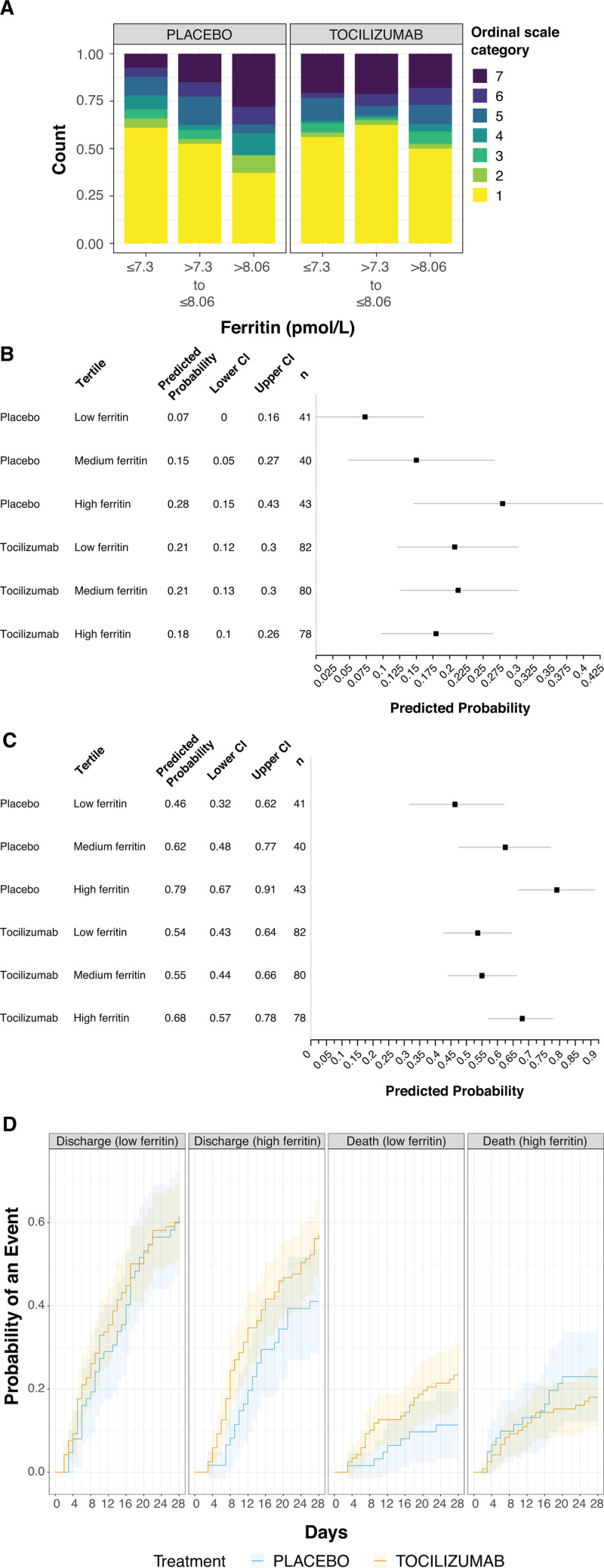Figure 3.
Ferritin as a predictor for efficacy outcomes. A, Day 28 all-comers, B, unadjusted tertiles model-predicted probability of death to day 28, C, unadjusted tertiles model-predicted probability of mechanical ventilation to day 28 (in patients who did not receive mechanical ventilation at randomization), and D, cumulative incidence function plot of hospital discharge and death to day 28. Seven-category ordinal scale: 1, discharged or ready for discharge; 2, non-ICU hospital ward, not requiring supplemental oxygen; 3, non-ICU hospital ward, requiring supplemental oxygen; 4, ICU or non-ICU hospital ward, requiring noninvasive ventilation or high-flow oxygen; 5, ICU, requiring intubation and mechanical ventilation; 6, ICU, requiring extracorporeal membrane oxygenation or mechanical ventilation and additional organ support; and 7, death. Ferritin values were log-transformed (sample size, n = 364). Ferritin tertile cutoff values were 3.63 pmol/L (minimum), 1,480.77 pmol/L, 3,150.29 pmol/L, and 75,299.67 pmol/L (maximum) in an unadjusted model showing predicted probability and 95% CI (B, C). Cumulative incidence was determined by Aalen-Johansen estimator, with an arbitrary median cut point of 7.7 on logarithmic scale (D).

